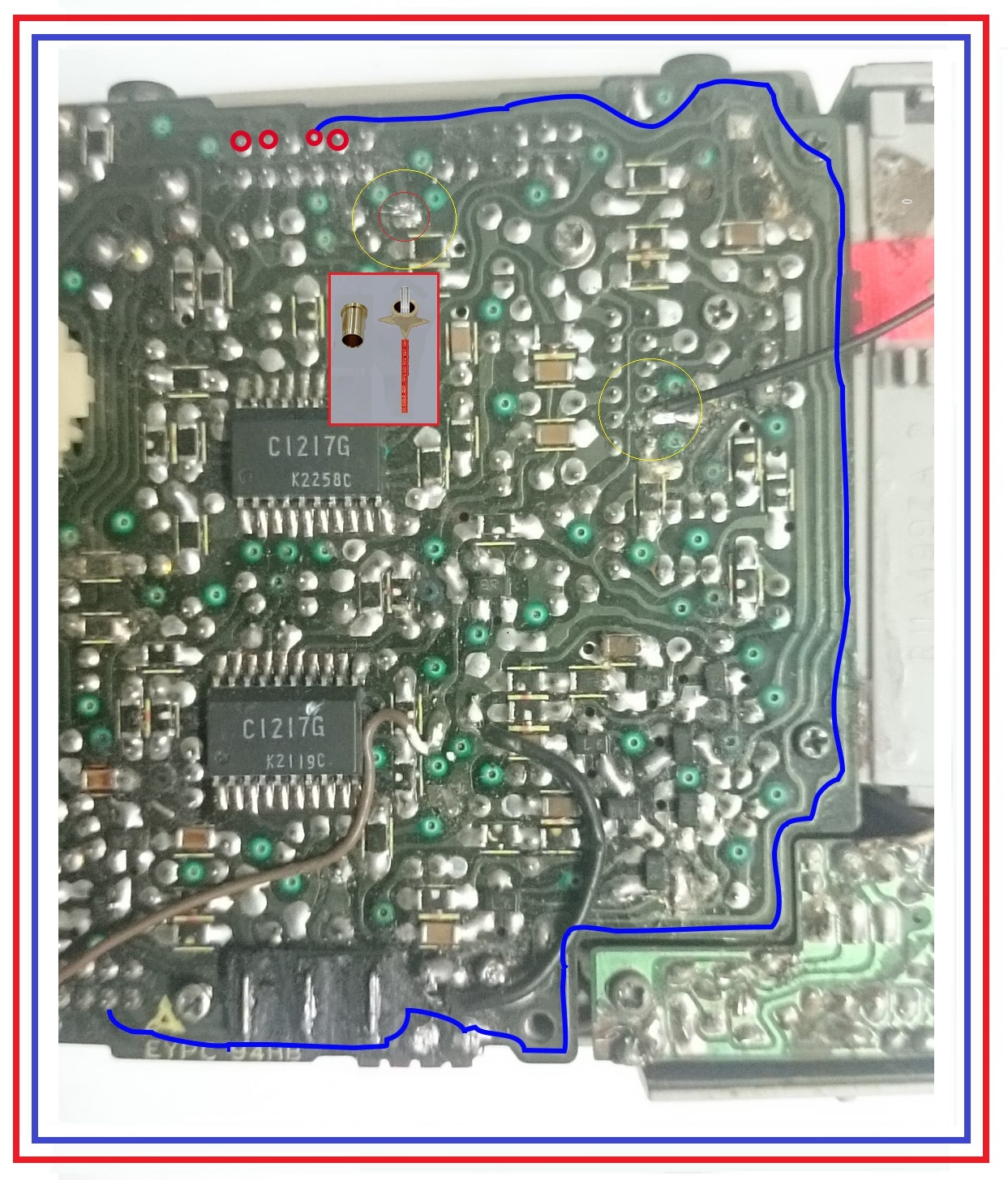Sir pharaon . . . . . . .
The reason for the slow, yet methodical, procedure for seeking out the correct connection of the power lead to the Radio portion , was to POSITIVELY, avoid any chance of damage to the
unit by applying FULL 3 volt power to the WRONG place.
The use of the 3 values of series resistors, was incrementally limiting the potential power level being applied.
Once you found that the progressive lowering of resistance, finally found that magical minimal power operational level to be with that 47 ohm resistor, we might now confirm that line as being the point where
the + RED battery wire gets connected.
HOWEVER, if being myself doing this , I would do a tracing out of ALL of the copper foil path that is being connected to that E terminal of the switch, at some solder blob on it, I would expect to find the original
short pieces of the RED wire when it broke off in the solder.
If you can't find that original connection, just make your new RED battery wire connection anywhere along that foil path that goes to switch terminal E.
You can see on the BLACK negative battery wire and how they made its butt connection to the foil path.
ASIDE . . . . .
In looking at the place where your old RED battery wire connection was made
***, it certainly looks like a valid point for that connection to be.
The situation being the star split hollow rivet being used at that point.
Look very closely at the solder formation around that point, and then at the inset illustration of a common hollow rivet and a hollow star rivet.
When one of the latter is crimped into place the star points of the rivet move outwardly to make a larger solder contact area.
The RED tinned lead wire then passes thru the rivet and is soldered .
That procedure is commonly used for single wires that come to a PCB and need to be securely terminated to the board with plenty of solder connectivity.
They are mechanically and electrically superior, but have a fault of failure to repeated lateral wire flexes.
***
If you trace the foil path from the inital old RED battery wire connection, it passes up and then to the left past the central area of the Radio-Tape switch and
up to a greener dot on the board where a connection is being made thru to a foil on the other side of the board.
To see if this green dot interconnection might possibly have failed, use an ohmmeter to probe into the foil just to the side of this board sides feed thru dot
and use the other probe into the foil just to the side of the dot on the other side of the board, confirm a short if that interconnect is being good.
73's de Edd



